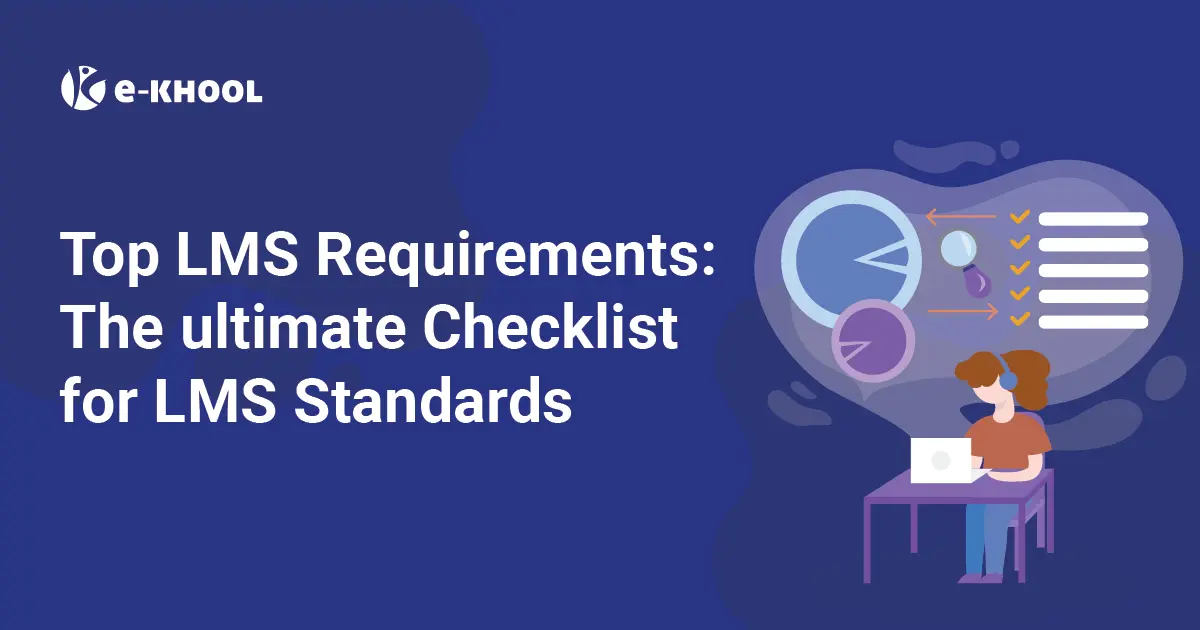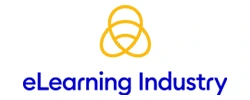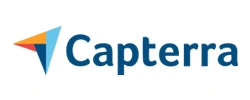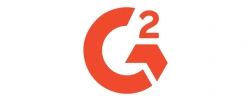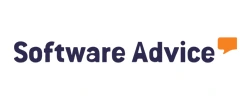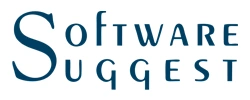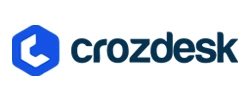Choosing the appropriate Learning Management System (LMS) is essential for providing online training and education in an efficient manner. User and course administration tools, which enable administrators to effectively create, organize, enroll, and track users and courses, should be included in a thorough checklist of LMS requirements.
Lets get started with quick overview of this article
LMS Requirements - Introduction
In the current educational environment, a Learning Management System (LMS) is an essential instrument that acts as a digital center for the production, administration, and distribution of training materials and instructional content. Simplifying the administration, tracking, and delivery of educational activities is a fundamental feature of learning management systems (LMSs), and it is necessary for corporate and academic training settings alike. In order to make sure the platform satisfies the unique requirements of instructors and students, it is imperative to evaluate a range of requirements, including customization choices, integration capabilities, scalability, and technological factors, when thinking about implementing an LMS. An LMS's efficacy is also greatly influenced by elements like user engagement, communication tools, and support services. Organizations may create a more effective and interesting learning environment that promotes skill acquisition and professional development with the help of the correct learning management system.
Key LMS Requirements and Capabilities
For educational institutions and organizations to administer, track, and offer training and educational programs, a Learning Management System (LMS) is an essential tool. An LMS must have the following key LMS requirements: material delivery that supports a variety of multimedia formats; course management that allows for the creation and organization of courses; user management that permits multiple roles and permissions; and assessment tools that include quizzes and feedback. An LMS should also provide collaboration capabilities for in-person contact, such as message boards and discussion boards, as well as statistics and analytics to track the progress and engagement of learners. In order to guarantee security, scalability, and system integration, technical requirements are also crucial. To create a productive and successful learning environment, it is critical to match these features with the organization's unique objectives when choosing an LMS with proper key LMS requirements.
Requirements Checklist for a Best LMS
Choosing the appropriate Learning Management System (LMS) is essential for providing online training and education in an efficient manner through checklist for LMS standards. The ability to create, organize, enroll, and track users and courses is a must-have feature for a top-tier LMS. This is known as user and course management capabilities. To accommodate diverse educational requirements and styles, it is imperative to take into account a range of learning approaches, including instructor-led training, blended learning, and eLearning. An LMS should also provide mobile learning so that users can access training materials at any time, from any location. Additionally crucial to encouraging cooperation and knowledge exchange among students are social learning characteristics. Finally, strong analytics, reporting features, and assessment tools are essential for tracking development and results.
Also read:The Reasons Why LMS Implementation Fails and How to Overcome it
Functional Requirements for a LMS
For a Learning Management System (LMS) to be successful and useful, it must meet certain functional requirements. User and course administration should be essential functions, enabling administrators to efficiently arrange and monitor users and courses. In addition to collaborative features and mobile capabilities ensuring accessibility and interactive learning experiences, assessment tools are critical for assessing learners' progress. A strong LMS should also have dashboards, reporting, and content management in addition to meeting technical needs like security and integration. Together, these components form an all-encompassing system that caters to the various demands of educators and students.
Gamification:
A Learning Management System (LMS) can be made more engaging and motivating for users by gamification, which is the integration of game design principles. Features like points, badges, leaderboards, and progress monitoring are examples of functional needs for gamification in an LMS that help create a rewarding and competitive learning environment. In order to promote participation and ongoing progress, individual learning objectives and performance can also be catered for when creating individualized learning routes, challenges, and rewards. Gamification components must be in line with the learning objectives in order for their adoption to be successful and for them to significantly enhance the learning process.
Multimedia content:
Gamification, as used in relation to Learning Management Systems (LMS), is the process of incorporating elements of games to improve user motivation and engagement. Features that incentivize users to interact with the content, such points, badges, leaderboards, and challenges, may be considered functional requirements for gamification in an LMS. These components make learning more engaging and fulfilling by utilizing people's innate drive for accomplishment and competition. To ensure a dynamic and productive learning environment, an LMS must functionally enable these gamification features.
Mobile learning:
Functional requirements for a mobile learning-capable learning management system (LMS) should prioritize features that increase user engagement and accessibility. Important components are offline content access for learning on the go, responsive design for device compatibility, and interactive multimedia support for efficient student engagement. Furthermore, integrating mobile-specific features like notifications might support maintaining students' interest and knowledge. Resources like the LMS requirements checklist from SelectHub and the insights from Inoxoft can be quite helpful in gaining a thorough understanding of the requirements.
Usability:
A crucial functional prerequisite for any Learning Management System (LMS) is usability. It includes making sure the system is accessible and easy to use for both teachers and students. A user-friendly interface, simple navigation, and interoperability with a range of devices and browsers are important components of usability. An LMS should also be flexible enough to adapt to an organization's changing demands and allow smooth connection with other tools and systems. A learning management system's (LMS) effective usability improves user engagement, boosts learning, and helps educational programs succeed overall with proper LMS Requirements Criteria.
Social learning:
Social learning features in a learning management system (LMS) are crucial for encouraging student cooperation and knowledge exchange. Peer-to-peer messaging, discussion boards, resource and idea sharing, and other peer-to-peer interaction elements are usually included. Furthermore, social media platform integration can improve social learning by giving students access to a more comfortable and familiar setting in which to interact. The objective is to establish a vibrant learning community that encourages ongoing education and idea sharing, both of which are essential for any contemporary LMS to succeed with well tailored standard LMS requirements.
Technical Requirements for a LMS
A learning management system's (LMS) technical requirements should prioritize features that provide seamless operation, interoperability, and security inside an organization's IT infrastructure. User and course management, different learning paradigms like blended learning and eLearning, and technological components like security and integration capabilities are frequently included in core features. To satisfy the organization's educational goals, it is also critical to confirm that the LMS can handle the preferred content distribution formats and evaluation techniques.
System requirements:
To guarantee a seamless and effective e-learning experience, it is critical to concentrate on a few crucial areas while evaluating the technical specifications for a learning management system (LMS). First and first, accessibility depends on system compatibility with a wide range of hardware and operating systems. Users should be able to access content at any time, anywhere, with the help of the LMS's mobile learning assistance. Robust security protocols are necessary to safeguard confidential information, and the system needs to adhere to e-learning standards like SCORM, AICC, and xAPI for easy tracking and content integration. To accommodate various organizational needs, the LMS should also provide flexible deployment alternatives, such as cloud-based solutions. For a workflow to remain coherent, integration capabilities with other software systems, such as CRM and AMS, are also crucial.
Hosting model:
Selecting the right hosting model is a critical aspect of the technical requirements for a Learning Management System (LMS). A web-based application that can be hosted on a web server is essential, with compatibility across popular web servers like Apache and Nginx being a significant consideration. Organizations must decide between cloud-based and self-hosted deployments based on their specific needs, such as scalability, control, and security. Cloud-based solutions offer the advantage of lower upfront costs and less maintenance, while self-hosted options provide greater control over data and customization. Additionally, ensuring reliable uptime, service level agreements, and support for automatic software updates and maintenance are vital for the smooth operation of an LMS. It's also important to have disaster recovery and data backup strategies in place to safeguard against data loss. When evaluating LMS hosting options, it's crucial to consider these technical requirements to ensure a robust and effective learning environment.
Data security:
To guarantee a seamless and effective e-learning experience, it is critical to concentrate on a few crucial areas while evaluating the technical specifications for a learning management system (LMS). First and first, accessibility depends on system compatibility with a wide range of hardware and operating systems. Users should be able to access content at any time, anywhere, with the help of the LMS's mobile learning assistance. Robust security protocols are necessary to safeguard confidential information, and the system needs to adhere to e-learning standards like SCORM, AICC, and xAPI for easy tracking and content integration. To accommodate various organizational needs, the LMS should also provide flexible deployment alternatives, such as cloud-based solutions. For a workflow to remain coherent, integration capabilities with other software systems, such as CRM and AMS, are also crucial.
Payment gateways
It is critical to confirm that a learning management system (LMS) satisfies specific technological standards in order to facilitate safe and effective transactions when integrating payment gateways. To meet the needs of a global user base, a strong LMS should accept a variety of payment options, such as credit/debit cards, e-wallets, and net banking. To safeguard sensitive financial data, it is imperative to select a payment gateway provider who adheres to global security standards such as PCI DSS. It is essential for international transactions that the LMS be able to handle various currencies and tax rules.
SCORM:
There are some technical standards that must be followed while creating a Learning Management System (LMS) that complies with SCORM. The Sharable Content Object Reference Model, or SCORM, guarantees that e-learning content is consistent and functional across various Learning Management System (LMS) platforms. The two main parts are a material Aggregation Model that explains how to package material for LMS integration and a Run-Time Environment that controls how content behaves after the LMS launches it. In order to facilitate a smooth import and launch within any SCORM-compliant LMS, this entails generating XML files that specify the course structure and content data.
Business Requirements for a LMS
A thorough set of business criteria must be taken into account when developing a learning management system (LMS) to make sure the platform satisfies organizational demands. Integration with current systems, content production and delivery formats, and user and course management capabilities are important factors to take into account. To accommodate diverse training methodologies, the LMS should also offer a variety of learning modalities, including instructor-led training, blended learning, and eLearning. It is crucial to match these needs with the organization's learning and development objectives for a successful implementation.
Authoring:
Prioritizing features that make it possible to create and manage interesting and instructive content is crucial when thinking through the business requirements for a learning management system (LMS) with an authoring focus. Authoring tools must to be flexible and easy to use, enabling the incorporation of different multimedia components including text, photos, and videos. Furthermore, in order to properly measure learners' progress, these technologies need to facilitate the design of assessments. Offering certifications is another essential element that gives users a concrete way to be recognized for their learning accomplishments. Businesses hoping to make money from their courses must integrate e-commerce, and a strong support network guarantees that both instructors and students can quickly address any problems. As Inoxoft suggests, a comprehensive documentation of these needs is essential to the effective deployment and scalability of an LMS. In addition, as Agente pointed out, making sure the LMS can easily interface with other platforms and systems will improve the workflow and the overall learning experience.
Certifications:
Certifications are important when it comes to the business needs for a Learning Management System (LMS). They act as a concrete recognition of the development of skills and competencies, which is important for employee growth and adherence to industry norms. Comprehensive authoring tools that enable the development and customisation of certification programs suited to particular business requirements should be provided by a strong LMS. It should also have robust support to handle any technical or user experience concerns, as well as e-commerce integration to enable the selling and distribution of courses. For the sake of clarity and vision, these needs must be documented. Business analysts usually do this by creating Vision and Scope (V&S) and System Requirement Specification (SRS) documents. Setting these needs in order of importance guarantees that the LMS will meet the organization's strategic objectives and offer a clear deployment and future scaling roadmap.
e-commerce:
The elements that will improve user experience and expedite the learning process should be the primary focus of any analysis of the business needs for an e-commerce Learning Management System (LMS). Enabling smooth transactions requires integration with e-commerce platforms and payment gateways. A design that is mobile-friendly and adaptable guarantees accessibility on a range of devices, making it appealing to a wider range of users. Learners' motivation and engagement can be greatly boosted by gamification and social learning elements. Options for customization enable a tailored learning environment and consistent branding. Finally, for monitoring progress, analyzing learner behavior, and making wise decisions to enhance the learning approach and content, comprehensive reporting and analytics tools are essential. When these components work together well, they produce a potent learning management system (LMS) that uses a full online learning solution to promote corporate growth in addition to delivering instructional content.
Support:
Support is an important component to take into account when analyzing the business needs for a Learning Management System (LMS), as it can have a big impact on the platform's efficacy and user acceptance. Comprehensive support options for handling technical problems, user questions, and administrative difficulties should be provided by a strong LMS. This includes thorough documentation, an attentive help desk, user manuals, and administrator and user training. An LMS should also offer regular maintenance and updates so that the system stays up to date with the newest security guidelines and technological advancements in education. An LMS's user network or community forum is useful for exchanging solutions and best practices. A smoother deployment and a better user experience can result from having these support systems in place, which will eventually help the organization's learning and development programs succeed.
Documenting LMS Requirements for a LMS
The process of selecting and implementing an appropriate platform for a Learning Management System (LMS) requires careful documentation of requirements. It entails putting up an extensive overview that covers the functional requirements, target audience, and project goals. The process can be facilitated by using a well-documented LMS requirements checklist, which can help you identify specific training requirements and create a methodical selection process. To improve the learning experience, it is critical to take into account learning models, user and course administration capabilities, and the integration of diverse media kinds.
Reports:
The requirements for reporting functionalities in Learning Management Systems (LMS) should be documented with careful consideration for the various needs of stakeholders and the needed level of data analysis. Reports on learner progress, content interaction, and training efficacy should offer practical insights. Progress tracking, comprehension of training outcomes, content evaluation, and thorough HR and management reporting are possible key elements. These reports ought to be adaptable to meet the needs of many stakeholders, including team leaders, L&D managers, senior management, and HR managers, each of whom has varied requirements for data types and presentation styles. Senior management could be more comfortable with high-level infographics, for example, but L&D managers might require comprehensive access to all training data. Additionally, incident management and personnel changes may depend heavily on the capacity to recognize internal problems through reporting. Consequently, a strong LMS should provide off-the-shelf solutions with simple-to-understand templates and the adaptability to change with the demands of the company.
Analysis :
One of the most important steps in the selection and implementation process is documenting the requirements for the Learning Management System (LMS). It entails a careful examination to determine and rank the organization's demands. The cornerstone is a thorough LMS Requirements Document (LRD), which outlines the goals, target market, and functional requirements of the project. Other crucial elements of the documentation include functional specifications, user interface and experience design papers, a testing schedule, and quality assurance protocols. A good learning management system (LMS) should be able to allow personalized learning paths, host and monitor instructional courses, and interface with other systems. In order to guarantee that the LMS is in line with the larger organizational objectives and offers a smooth user experience, it is crucial to include essential stakeholders in the process.
Frequently Asked Questions
1. What are the core functional requirements for an LMS?
Core functional requirements include user and course management, learning models, and content delivery formats.
2. What are the main learning models available in LMS platforms?
The main learning models are pure eLearning, blended learning, and instructor-led training.
3. How can one ensure the scalability of an LMS?
To ensure scalability, verify that the LMS can handle increased loads and user growth without performance issues.
4. Why is security and compliance important for an LMS?
Security and compliance are crucial to protect sensitive data and to meet industry and legal standards.
5. What should be considered when evaluating the cost of an LMS?
Consider setup fees, subscription costs, and potential charges for additional features or services.
Conclusion
In conclusion, the top requirements for a Learning Management System (LMS) like e-khool encompass a range of features that cater to various educational and training needs. A robust LMS should offer a user-friendly interface, customizable content delivery, and compatibility across multiple devices and browsers. Advanced features such as AI-augmented exam proctoring, interactive flipbooks, and AI-based analytical reports are also essential for enhancing the learning experience. Security features like encrypted content delivery ensure the protection of intellectual property, while marketing tools help in promoting the platform to a wider audience. With over 100 features, e-khool LMS stands out by offering a comprehensive solution for educational institutions and corporate training programs, aiming to provide an engaging and effective online learning environment.

